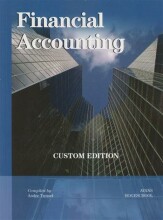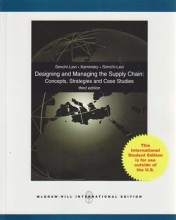Operations and Supply Strategies
21 important questions on Operations and Supply Strategies
What are structural elements that define a business?
What are infrasturctural elements that define a business?
What is the mission statement?
- Higher grades + faster learning
- Never study anything twice
- 100% sure, 100% understanding
What must the business strategy say?
- set time frames and performance objectives that managers can use to track the firm's progress toward fulfilling its business strategy
- identity and support the development of core competencies into the operations and supply chain areas
What are functional strategies?
A firm's strategies shoeld also be aligned 'across' the functional areas. What do we mean with this?
What are trade-offs (among performance dimensions), and give an example?
What are the three primary objectives of an operations and supply chain strategy?
2) ensure that firm's structural and infrastructural choices are strategically aligned with the firm's business strategy
3) support the development of core competencies in the firm's operations and supply chains
Experience suggests that four generic performance dimensions are particularly relevant to operations and supply chain activities what are those 4?
What is performance quality?
What is reliability quality?
What two basic characteristics does time has?
What does Delivery speed mean?
Many operations and supply chain compete by responding to the unique needs of different customers. Both manufacturing and service firms can demonstrate flexibility. What does flexibility mean?
What is changeover flexibility?
Cost is always a concern, even for companies that compete primarily on some other dimension what are some typical cost categories?
What happens in a competitive market?
What are order winners?
What are order qualifiers?
Understanding what the relevant order qualifiers and order winners are helping operations and supply chain formulate strategy in three ways what are those ways?
second, it clarifies the issues surrounding decisions on trade-offs.
finally, it helps managers prioritize their efforts
Four stages of alignment, and although the stages originally referred to manufacturing, their descriptions apply equally well to the operations and supply chain areas today what are those four stages?
Stage 2 - externally neutral: here industry practice is followed, based on the assumption that what works for competitors will work for the company
Stage 3 - internally supportive: At this stage, the operations and supply chain areas participate in the strategic debate
Stage 4 - externally supportive: At this stage, the operations and supply areas do more than just support the business strategy
The question on the page originate from the summary of the following study material:
- A unique study and practice tool
- Never study anything twice again
- Get the grades you hope for
- 100% sure, 100% understanding































